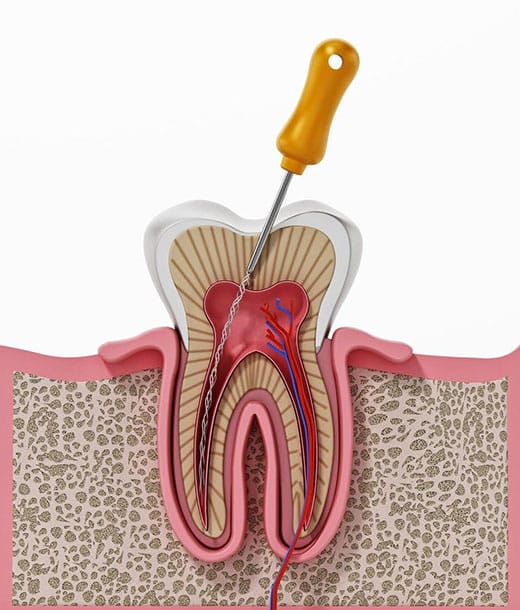
Root Canal Treatment
Infection or inflammation of the pulp can be caused by trauma to the tooth, deep decay, cracks and chips, or other dental procedures. If tooth pain lingers when you are eating or drinking, wakes you up at night, or occurs spontaneously, you might need a root canal.

About Root Canal Treatment
At the centre of your tooth is the pulp chamber, where a collection of nerves and blood vessels that help support the surrounding tooth reside.
Root canal treatment is a dental procedure that involves the removal of infected or irritated nerve tissue within this chamber.
FAQs
-
What are some of the symptoms that may require you to have root canal treatment?
- Spontaneous pain or throbbing while biting.
- Sensitivity to hot and cold foods.
- Severe decay or an injury that creates an abscess (infection) in the bone.
-
What can happen if infected root canal is left untreated?
Left untreated infected pulp tissue will cause an eventual abscess and may also spread to the surrounding facial tissues.
-
How is a root canal performed?
The dentists at Dental864 use a non-surgical treatment to eliminate the diseased pulp. This injured pulp is removed and the root canal system is thoroughly cleaned and sealed. This therapy usually involves local anaesthetic and is completed over 3 visits depending on the treatment required.. If your tooth is not amenable to endodontic treatment or the chance of success is unfavourable, you will be informed at the time of consultation or when a complication becomes evident during or after treatment. You will be able to drive home after your treatment (unless oral sedation is used), and you will probably be comfortable returning to your normal routine.
-
How is a tooth restored after the completion of root canal treatment?
The tooth will then possibly need a post and core and a crown in order to re-establish normal form and function. This decision will be based upon how much natural tooth structure is remaining and the amount of load the tooth is under.

